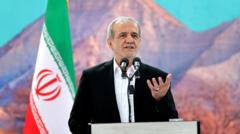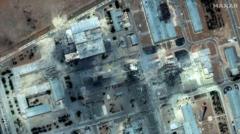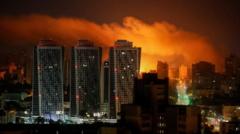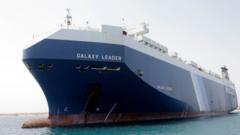The Tehran Museum of Contemporary Art houses an extraordinary collection of modern masterpieces, including works by Picasso, Van Gogh, and Pollock, which have remained mostly hidden since the 1979 Iranian Revolution. A recent exhibition brought renewed interest, but access remains challenging for international art lovers.
Hidden Treasures: The Tehran Museum's Modern Art Collection Unveiled
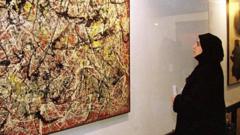
Hidden Treasures: The Tehran Museum's Modern Art Collection Unveiled
A rare collection of masterpieces by celebrated artists like Picasso and Pollock remains largely undiscovered outside Iran, showcasing a rich history intertwined with the nation's complex past.
The Tehran Museum of Contemporary Art, often referred to as a hidden gem, boasts one of the world’s most remarkable collections of modern art, featuring masterpieces from celebrated artists such as Pablo Picasso, Vincent Van Gogh, Andy Warhol, and Jackson Pollock. Despite its cultural significance, the museum remains largely unknown to art enthusiasts outside Iran, as many of its treasures have been kept in obscurity since the tumultuous events of the 1979 Iranian Revolution.
Recent estimates place the value of the museum's collection at around $3 billion, with only a fraction of the artworks displayed to the public over the past few decades. However, the Eye to Eye exhibition, which launched in October 2024, marked a turning point for the museum, gaining immense popularity and extending its run until January 2025 due to strong public interest. This exhibition is considered one of the museum’s most impactful events, showcasing over 15 artworks for the first time, including a sculpture by Jean Dubuffet, which was particularly noteworthy as it marked its debut in Iran.
The collection captures a pivotal evolution in art history, transitioning from abstract expressionism to pop art, and includes Andy Warhol's iconic portrait of Iran's last queen, Farah Pahlavi, highlighting the intersection of Iranian culture and Western artistic movements. Another remarkable feature is Francis Bacon’s Two Figures Lying on a Bed with Attendants, which presents a provocative exploration of human intimacy and observation. In a striking visual commentary, Khomeini's portrait hangs adjacent to Bacon's work, emphasizing the cultural tensions within the artwork.
Established in 1977 under the patronage of Pahlavi, the last Shah's widow, the museum was designed to cultivate Iranian art appreciation and foster connections with global art communities. Initially, the museum thrived, amassing works from iconic modernists, but the aftermath of the 1979 revolution transformed its role. Many artworks fell victim to the changing political landscape, deemed offensive due to their nudity or political implications. Warhol's portrait of Farah Pahlavi, for instance, became a target of vandalism during revolutionary riots, contributing to the artifacts' seclusion in the museum's basement.
Following the revolution, the museum’s artistic treasures remained hidden from view, locking away its collection like a fabled art trove gathering dust. It wasn’t until the late 1990s, during reformist political changes, that the museum began to reclaim its cultural importance. Art lovers worldwide were astonished when iconic pieces by Van Gogh and Dali once again graced the museum’s walls, and select works were loaned to major international exhibitions.
Leading art historian Hamid Keshmirshekan describes the museum's collection as "one of the rarest treasure troves of modern art outside the West." Among its treasures, the collection includes Henry Moore's Reclining Figure series alongside Jackson Pollock’s Mural on Indian Red Ground, all pulsating with vigor and energy.
As the museum continues to operate on a limited budget, it faces ongoing challenges linked to shifting political landscapes. Despite these obstacles, it stands as an extraordinary cultural hub, serving as the unlikely steward of significant modern art masterpieces within the heart of Tehran, waiting for global recognition and appreciation. However, prospective visitors from the UK face travel advisories, further complicating access to this exceptional collection amid the backdrop of complex geopolitical tensions.







